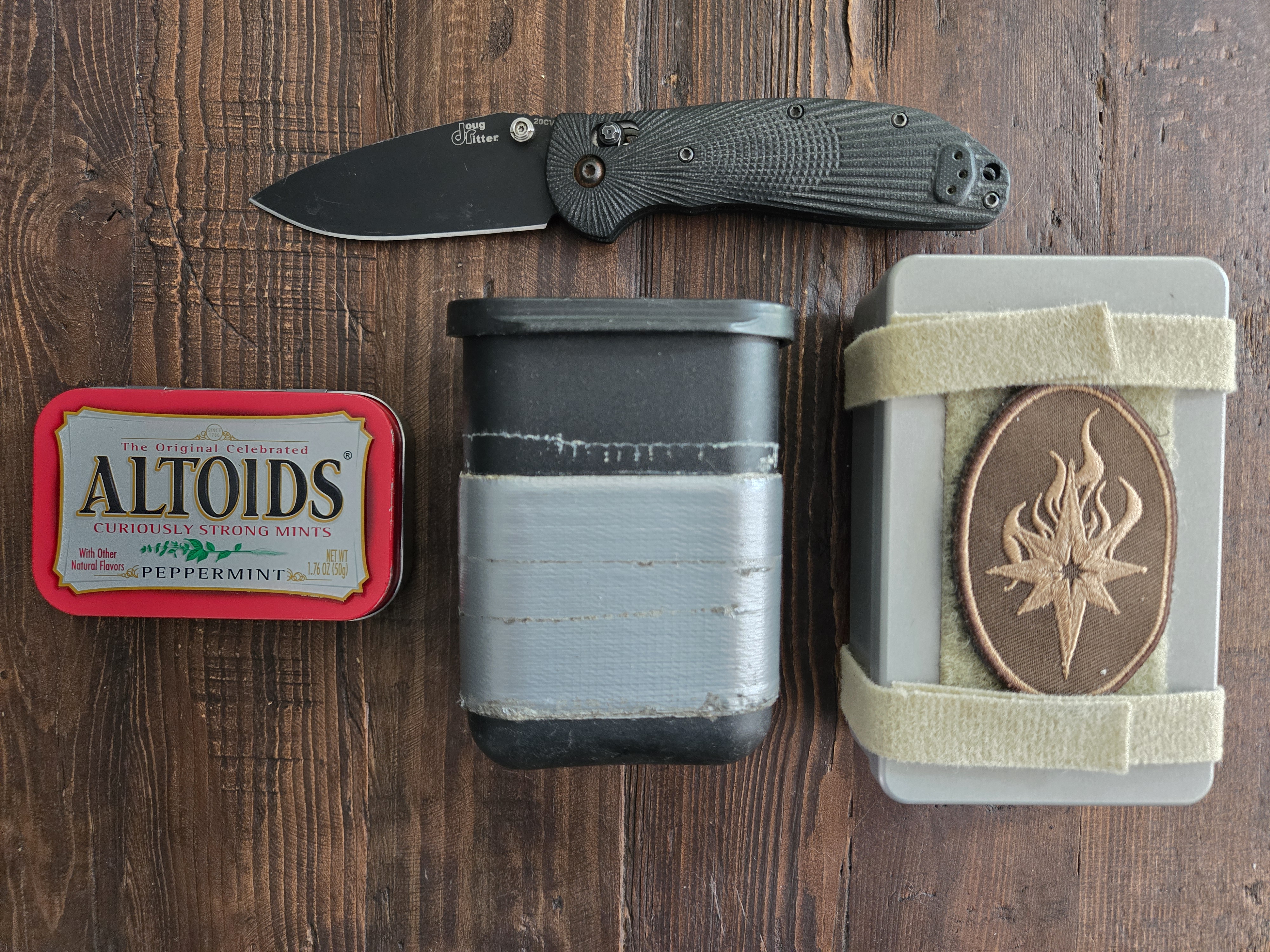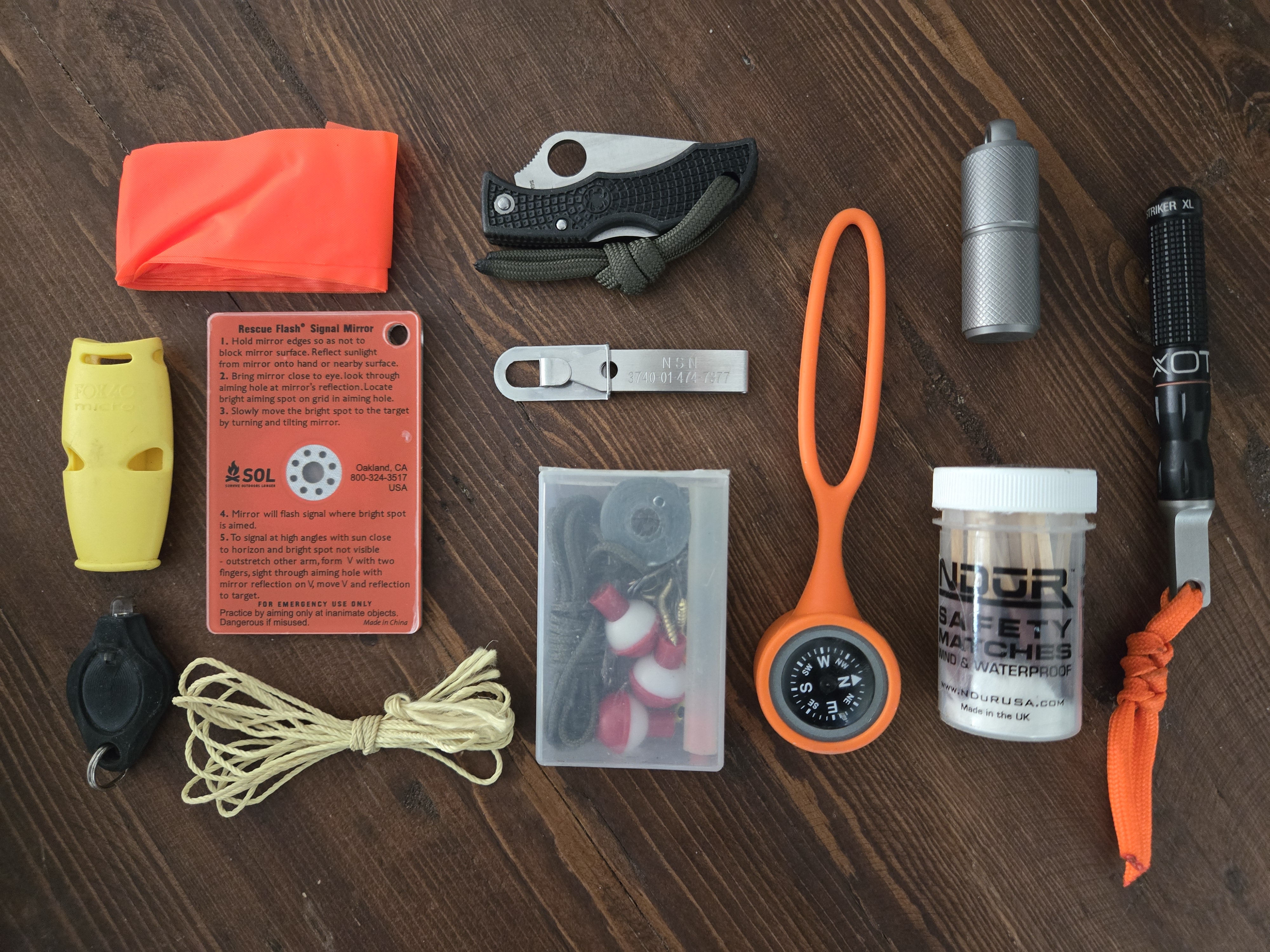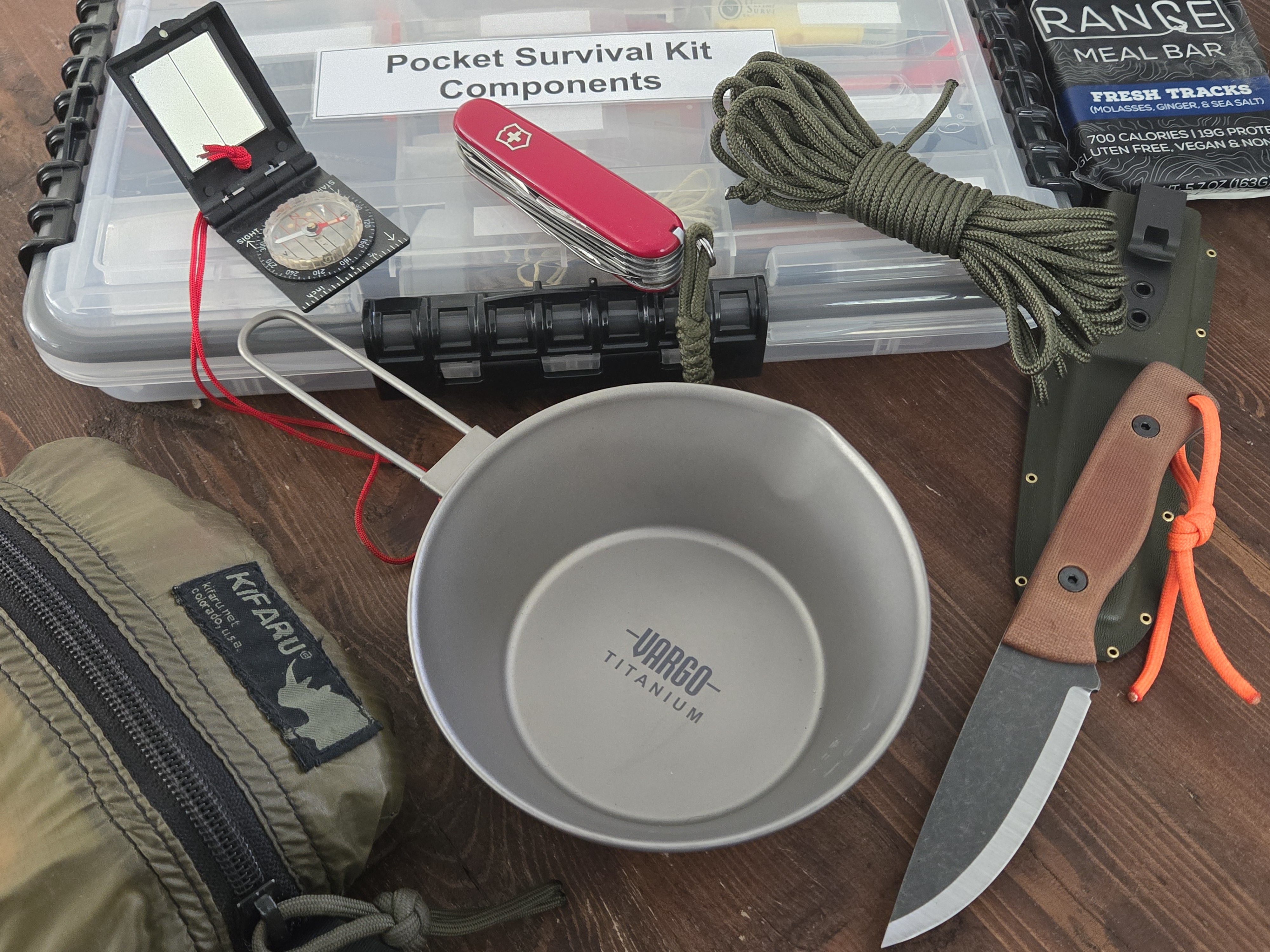24 years ago, I was introduced to the website of Doug Ritter. If you haven’t heard the podcast he and I did for Fieldcraft Survival, you may not be aware he is a Godfather of preparedness. Right around Y2K, I learned about Doug’s miniature survival kit he built out of a recycled Altoids tin. The man carried miniature scalpel blades, fish hooks, fire starting tinder, button compass, whistle, mini-squeeze light and many well-thought out items perfectly tucked into every available space. Shortly thereafter, I started carrying similar items; first in a small ziplock, then in an Altoids tin, then in a military decontamination container. The idea of carrying these items spoke to the lifelong outdoorsman and student of survival in me. Truly every day carried, EDC’ed if you will, this kit came in handy for sewing on buttons broken off, addressing the occasional cut finger, and using the duct tape for a million and one problems. I bring up this kit in this week’s blog not to reminisce on the past but rather inspire those who don’t know where to begin. When confronted with the cost of everything survival-related on the market, you must decide where you put your hard-earned money. I’ll suggest starting small, pint-sized, and learning the value of preparation first. It will lead to much more including how to think about your kit and the other items you carry.
Container

My first pocket container was a snack-size Ziplock bag because it is what I could find while attending a wedding in Boston. I went to the local CVS store and filled it with some basic items. I scrounged the hotel room for others. With repeated carry, the simple bag wore out and I realized the need for something more durable and understood the idea behind using one made from tin/metal. I eventually bumped up in size to a decontamination kit to hold slightly larger items (a Spyderco Ladybug replaced my hardback razor) and over the years it has evolved again and again. Today, I still carry a tin made by SOLKOA for my “Global Kit” coined by my friend Lt. Mike. This kit accompanies me while traveling abroad and it has many of the original items of the first. When selecting your container, decide where it will be carried and what the max dimensions can be. Don’t be afraid to use something like a Vargo Sierra Cup as a container for your kit. Decide based on durability, water resistance, replacement cost, and so on. If you are gifting a small pocket kit, you can’t go wrong with the original Altoids tin as a baseline starting point.
Items

Mission dictates gear. What you carry should be grounded in actual needs. Some of the items carried in my kit pertain to wilderness travel (fire starters, folding saw blade, compass) and some of the items stem from urban needs (spare cash, I.C.E. card, water treatment pills). Some items carried will be absolute last-ditch items like a Reynolds oven bag or MRE beverage bag pouch for water instead of using your canteen. Some items like that aforementioned squeeze light tend to get used more frequently and they should be packed toward the top of your kit. Certain items, like a small hank of paracord, carry better outside the container as a wrap. These items you carry come at a trade off. A small section of hacksaw blade used as a ferro rod scraper or an emergency saw doesn’t work as well as a dedicated carbide striker or a full-size hacksaw but it is more compact and multi-purpose. That is the ongoing balance you will need to find. Multi-purpose items accomplish many tasks but not as well as dedicated items. Despite this, they take up less space and don’t weigh as much. When you train with smaller items, you understand the importance of carrying larger versions of them for frequent use. There are a lot of questions and considerations as to what you should carry. I’d suggest giving this podcast a listen if you have the time and want more suggestions.
Habits

Perhaps the greatest benefit of carrying these pint-sized items is the greater habits they form. The first time you have a solution readily at hand to a problem, you will understand the value of preparedness. The first time someone expresses appreciation for something you have may inspire you to have practical additional items on you. Having a kit on your person builds habits as well. You can build consistency with where you carry your kit and how and where you set it down at the end of the day with your keys, wallet, phone, etc. You can build responsibility and a maintenance schedule of the items you carry by knowing when you need to swap out batteries and replace items with expiration dates like your water treatment tablets. You can also build a habit of changing out items for the season you’re in. Part of the reason why I moved up from the Altoids tin to the decontamination kit and eventually the SOLKOA tin. If you’ve built out kits for your family,you can build in the accountability check where you pocket check your family and praise them if they can produce it. If you can build up a kit for your pocket, you can scale it up and build one for your vehicle and then one for your house. What I love about the idea of carrying a small kit is the thought process it helps forge in the individual. By packing certain equipment you start to identify problems and avoid them. The ultimate goal is to avoid or mitigate problems because you’re aware. While these kits are minimalist in design, the benefit is much greater than just having a few items in your pockets.
